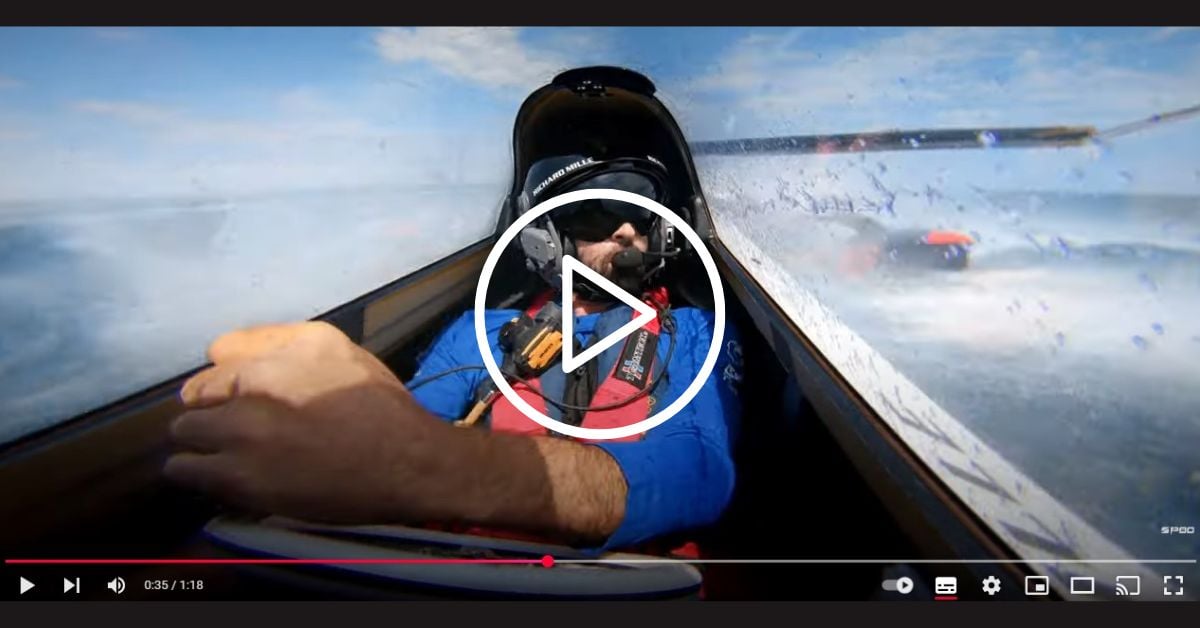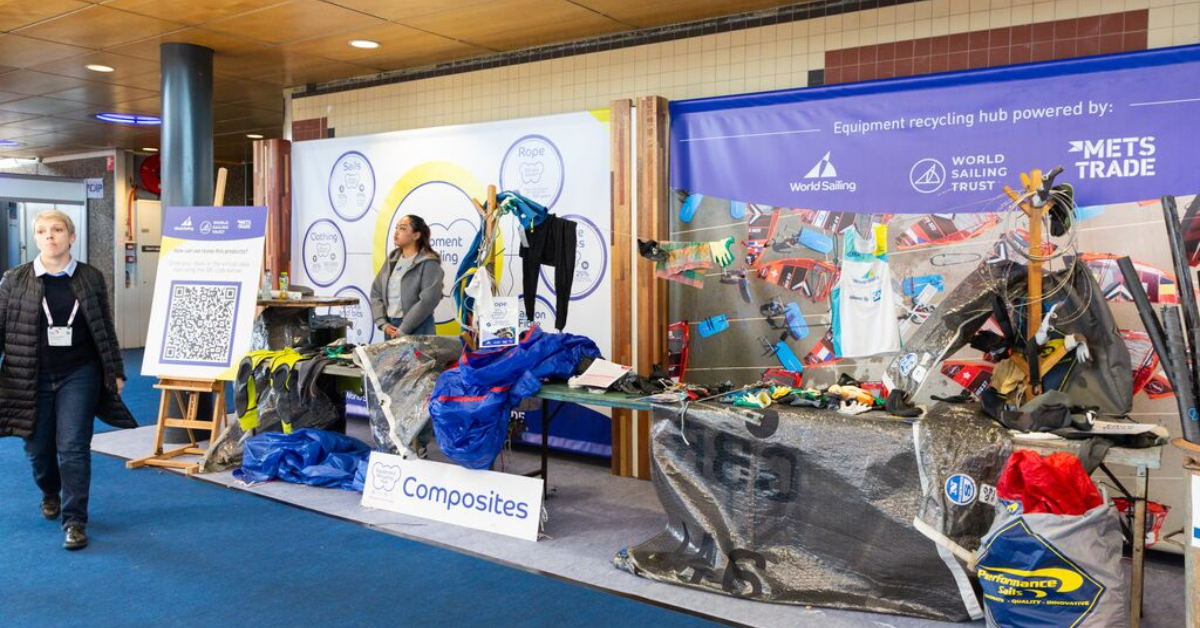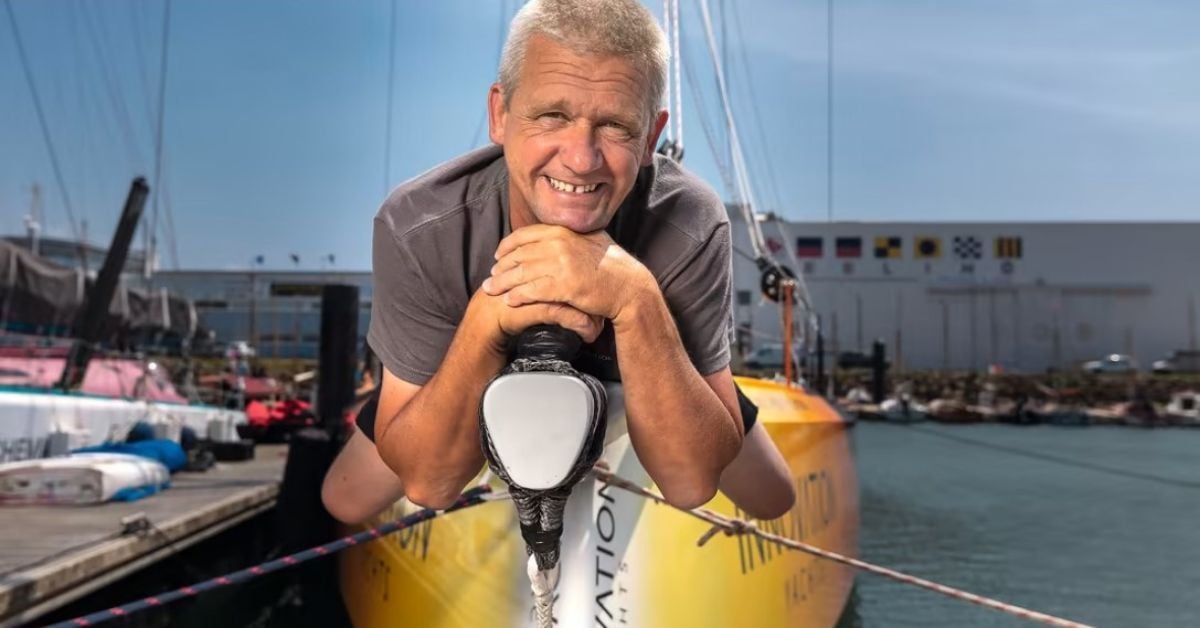Record hunters overcome hydrofoil cavitation
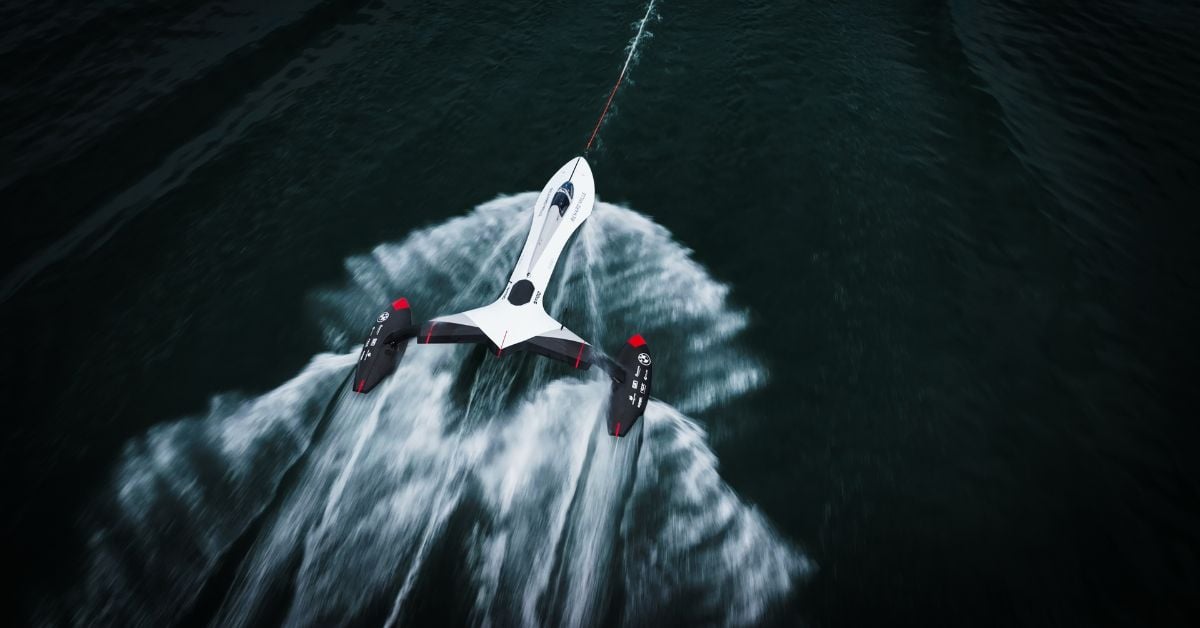
Challenging the world speed record for sailing craft, the Swiss team SP80 is developing and fine-tuning a ventilated hydrofoil that could help break the hydrodynamic boundaries that limit boat speeds to around 50 knots. Cavitation that occurs around hydrofoils at these high speeds can be eliminated in a radical new hydrofoil design. Overcoming cavitation could enable future development of low-drag, high-speed maritime transport.
The speed record for wind powered vessels that was set by Paul Larsen in 2012 on board Vestas Sail Rocket at 65.45 knots still stands. It remains a very impressive record, because laws of physics are bent in such speeds on water. The problem is cavitation. This year, team SP80 (Speed Potential = 80) aim to crush the Sail rocket world record by reaching 80 knots. Their problem to overcome: cavitation.
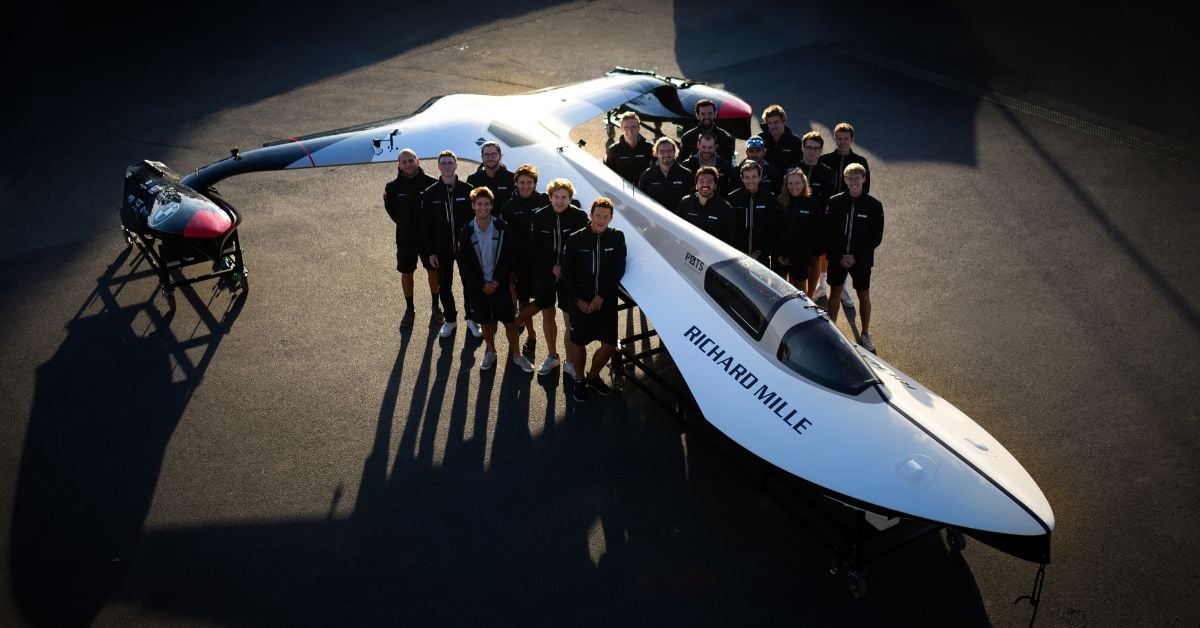
Low pressure evaporation bell
Cavitation is related to viscosity. The viscosity of water is higher than that of air. The viscosity of syrup is higher than that of water. If a wing shaped profile moves through air, differences in flow along the profile will create lift. This also occurs in water. If the angle of the wing profile towards the air or water is right, the lift will be optimal while turbulence at the trailing edge will be minimal. At high speeds, due to viscosity, water can not follow its laminar flow at the trailing edge of a wing-shaped profile after it has been pushed aside by the leading edge of this profile. The fluid is just too slow. A vacuum bell occurs at the low pressure side of the foil profile. Or a bell filled with vaporised water, due to the very low pressure. This is called cavitation. Foiling craft that move through water at high speeds use very slim foil profiles to reduce this effect. At a certain speed however, cavitation is unavoidable. The unstable cavitation bells make the lift and course of the vessel very unstable and disable further acceleration. This is why the speed of foiling craft is limited.
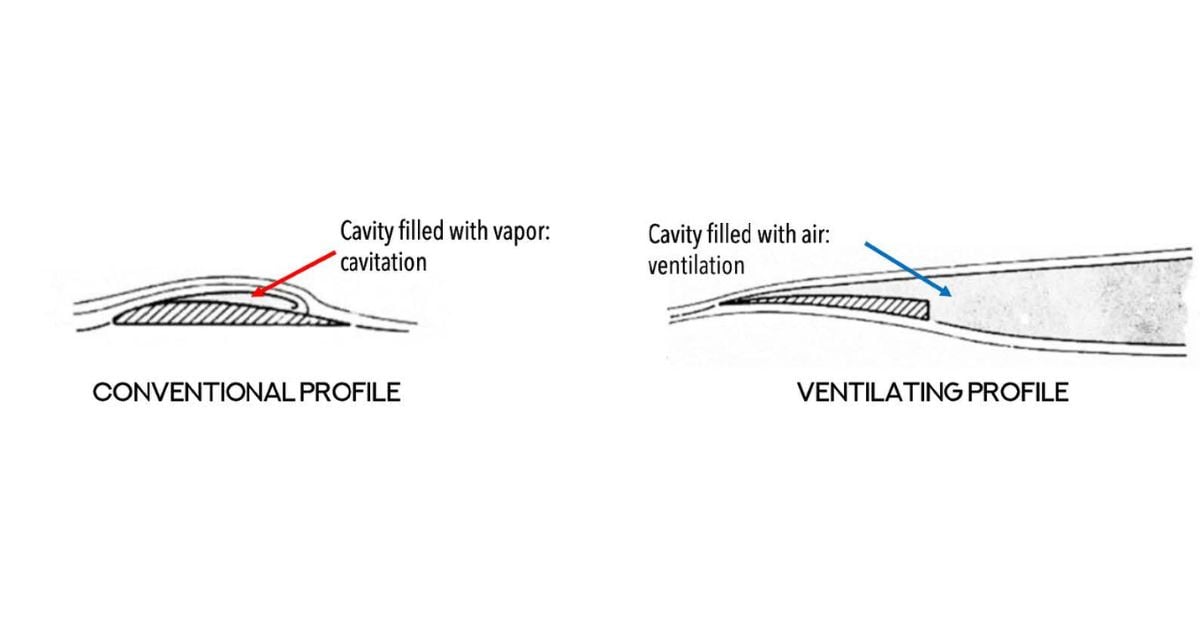
Ventilation
In their quest to reach 80 knots (150 km/h) the team of SP80 has been working hard to design a foil that is not held back by cavitation but with a profile which will still generate enough lift to carry the hull of their vessel over the water. Moving a bulky hull through the water will definitely cause too much drag to ever reach 80 knots. Studies by maritime engineers in the Journal of Fluid Mechanics and performed by the team of 40 engineers and students from the Institute of Technology in Lausanne EPFL (Ecole Polytechnique Fédérale de Lausanne) indicated that the unstable effects of cavitation can be overcome by ventilation. When air is introduced into the ultra low pressure areas at the lifting side of a hydrofoil, the bell will form into a more stable shape that follows the foil. The foils’ direction through the water and it’s lifting force become much more stable than was the case with the cavitation bell of water vapour. This key insight may allow hydrofoil craft to move at higher speeds then before.
A.I. shape design
The next problem to solve: which foil shapes will hold the air bubbles stable in the continuously changing circumstances of a hydrofoil moving through water? Although the knowledge of fluid dynamics has seen rapid progress over the last decade and computational power has increased immensely, designing a foil shape that ensures lift as well as a stable air injection flow demands endless calculation. Artificial Intelligence has provided the possible solution.
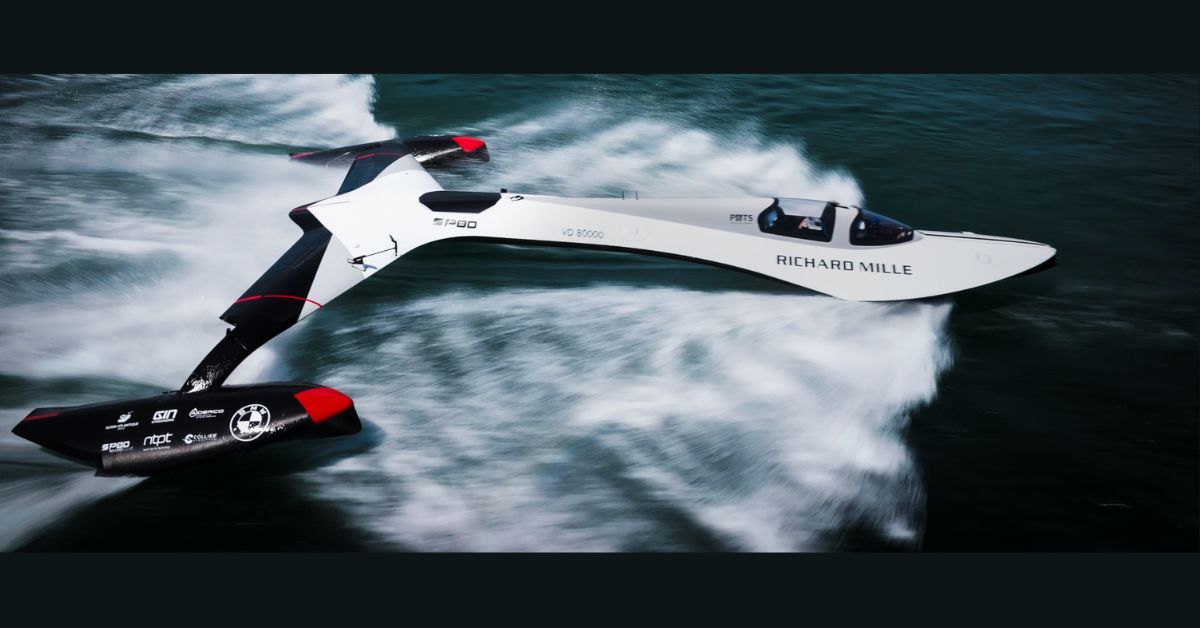
Wedge shape
Charles de Sarnez, head of hydrodynamics of the SP80 team, organised a programme of testing, optimising and simulation to achieve the optimal ventilating foil shape to break the 50 knot barrier. Models of the foils were tested in a cavitation tunnel to have real life experimental data. Fluid dynamics calculations were performed based on the experimental data. Artificial Intelligence was used to generate an immense number of simulations. Using the deep learning software from software company Neural Concept, the performance of a very large variation of hydrofoil shapes were evaluated. The result is a totally new foil design: instead of the elliptical or teardrop shaped foil profile, a wedge shaped profile emerged from the simulations and calculations as the most efficient shape to generate lift and create a stable air cushion at the low pressure side of the hydrofoil.
Sound barrier
"The foil is key to breaking the record" - explains Benoît Gaudiot, COO and SP80 kite pilot. The updated hydrofoil design – according to calculations - prevents instability from cavitation, enabling a sailboat to exceed the current speed record. "This is a crucial step for us", Xavier Lepercq, CTO of SP80 emphasizes. "In the world of sailing, the fastest boats are all confronted with a physical underwater phenomenon: cavitation. This is comparable to the sound barrier in aviation. To exceed 60 knots, we need foil shapes that are very different from what we can see today in the America’s Cup and in the sailing world; the constraints are not the same. If our boat can overcome this barrier, we can not only rival Vestas Sailrocket II but surpass it."
Attempt
Together with Mayeul van den Broek, Lepercq and Gaudiot came together in 2018 as lovers of kiteboarding, ocean sailing and scholars of hydrodynamics. They were inspired by the impressive achievement of Paul Larsen and his Sail Rocket but aspired to improve it. The three frenchmen will do an official attempt to break the current speed record for sailing craft later this year.
Speed potential
While in first instance aimed at beating the world speed sailing record, the innovation in hydrofoil design carries potential to allow for high speed waterborne transport with all kind of craft, as the boundaries set by cavitation may be overcome. Proof of concept is to be provided in the record attempt.
Photo: ©GuillaumeFischer
